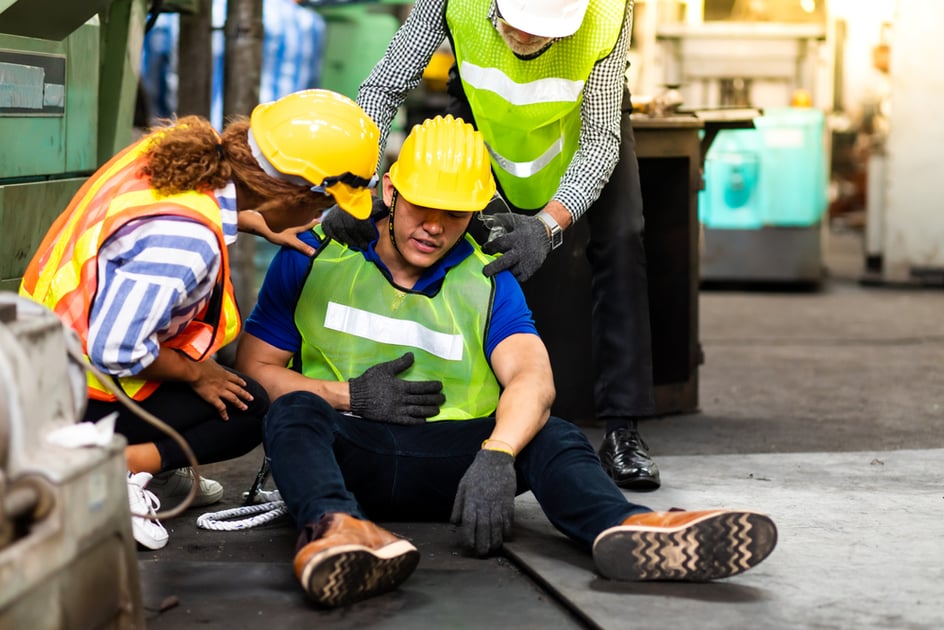Manufacturing can be a dangerous line of work. In 2020 alone, the BLS recorded 340 fatal accidents and over three hundred thousand nonfatal manufacturing injuries. That's a lot of people hurt on the job.
The most common manufacturing injuries include contact with machinery, slips and falls, incidents involving on-site vehicles, etc. Keeping injuries down is vital for productivity and morale, as well as simply being the right thing to do. However, many business owners are unsure how to prevent work-related injuries.
By applying the following six safety tips, manufacturing businesses can establish safe guidelines for all workers, improve their overall culture, and help reduce costs.
1. Implement Safety Training
Getting injured at work can destroy morale and interest in staying on the job, but ongoing safety training can prevent most injuries. A proper training program that goes past orientation and initial training is one of the most significant steps you can take.
An experienced PEO can collaborate with your team to customize a safety manual and provide periodic training to ensure all employees pay attention to safety. Templated programs can help a company get started, but effective programs are tailored to your culture, which leads to the next recommendation!
2. Create a Culture of Safety
Creating a safety culture begins with leadership’s emphasis on employee protection and safety above all else. This includes a proactive mindset in identifying risks, reducing hazards, and promoting safety standards throughout all levels of your company.
An effective safety culture includes the following:
- Managers and supervisors lead by example. They set the standard by following the rules and safety practices. Anyone on the factory floor, including management, office staff, and executives, must comply with safety policies.
- Employees are involved with safety & health initiatives. Senior employees are encouraged to lend their experience and expertise.
- Formal hazard assessment is completed regularly to identify risks and communicate the safest means to accomplish risky tasks.
- Provide training to elevate safety awareness and improve employee skills to recognize safety hazards and implement appropriate corrective measures.
3. Start a Wellness Program
Wellness programs improve safety. How? Healthy employees are more alert, more likely to recognize hazards, and less likely to forget necessary safety steps. Many accidents are caused by fatigue, so providing tools to help employees get a good night's sleep can really help.
Wellness programs also reduce absenteeism, which also promotes safety. Running a "skeleton crew" can put everyone in danger because there are fewer eyes on everything. Partnering with a PEO can give you access to a wellness program.
Components of employee wellness programs range from flu shots to stress management to planning wellness events. PRO Resources has experience designing wellness programs for manufacturing companies. Many employees also appreciate having access to a wellness program; this is a plus as a benefit and a hiring incentive.
4. Provide Better Benefits
Cost savings from workers’ compensation coverage can allow you to afford better healthcare benefits. With good health insurance, workers will get their preventive care and are thus less likely to be sick on the job.
Employers may overlook the benefits of a robust time-off policy (Paid Time Off or PTO). As already mentioned, many accidents are caused by fatigue, so providing your workers with proper time off can prevent and/or minimize exhaustion or burnout. Statistics prove that rested, healthy employees are less likely to injure themselves or others.
5. Maintain Proper Compliance
Compliance is not just a necessity but a ‘best practice’ to minimize unexpected costs. When an accident happens, there is a potential risk of increased insurance premiums, OSHA investigations, and lost productivity. All of which decrease your profitability. Partnering with a PEO gives you access to their team of experts who can help you maintain compliance with regulations and state and federal laws. Proper compliance ensures safe workers, a secure workplace, and reduces the risk of accidents.
6. Hire the Right Fit Employees
Finally, you need to make sure that the employees you hire are the kind of people who believe in safety and can physically and mentally handle the job. Injuries can happen if an employee is unfit or is trying to do things they are not capable of. PEOs can help with your hiring process and assist you in selecting the right workers for the right positions.
Thriving with PRO Resources
Companies that partner with a professional employer organization like PRO Resources sustain healthier businesses and happier employees. PEOs add levels of expertise that help improve safety, wellness, and benefits that, in turn, raise morale and profitability.
Contact us to find out how PRO Resources can help your manufacturing company thrive.

